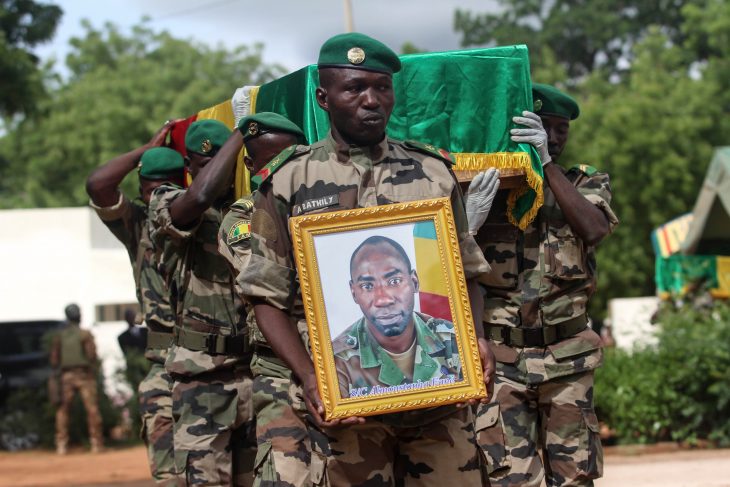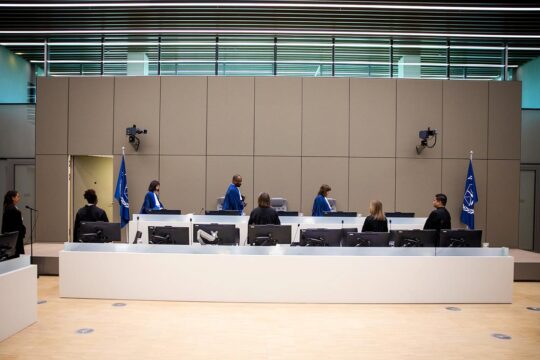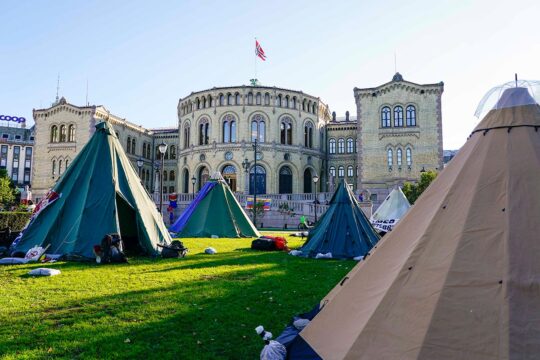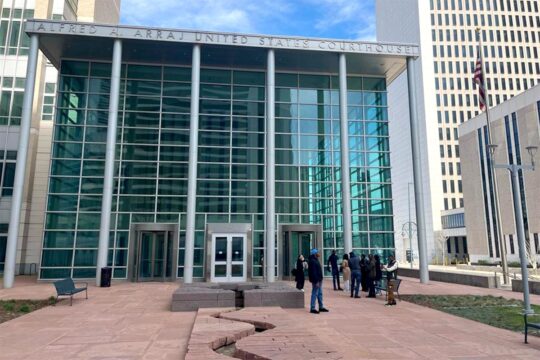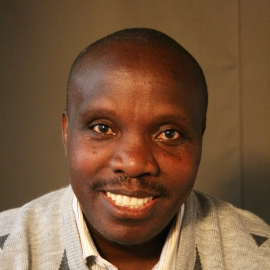Mali is struggling to implement the peace and reconciliation accord reached a year ago to restore peace and security particularly in the north of the country. And as if that were not enough, the central region, long spared from the violence endemic in the north, has in recent months seen a sort of insurrection the army is struggling to control. This situation poses a threat to a transitional justice process that has hardly begun.
In Kidal, northern Mali, cohabitation remains very difficult between two armed groups that signed the Algiers peace accord. The latest clashes between former rebels of the Coordination of Azawad Movements (CMA) and militia of the Imghad Touareg Self-Defence Group and Allies (GATIA) who are close to the government took place on July 21 and 22, causing fatalities on both sides and among the civilian population.
But which of the two groups started the hostilities? CMA spokesman Almou Ag Mohamed blames the GATIA, the Platform supported by Bamako. “On the afternoon of July 21 a column of heavily armed Platform 4x4s, at least 20 of them, entered Kidal, ignoring and disrespecting all the CMA checkpoints,” he told Studio Tamani on July 22. “They then started firing deliberately on the opposing camp. The CMA responded, and there were violent clashes which lasted nearly all evening. Then it started again in the morning as reinforcements arrived. Right now, tension has diminished because they have been pushed out of the town.”
How many casualties were there? “Last night we counted four dead already on our side, and around 30 attackers slightly injured,” the CMA spokesman said.
Government calls for end to violence
The GATIA, of course, blames the CMA. It has not given a casualty figure, saying only that there were dead and injured on both sides. “It is very difficult to say exactly what happened in Kidal,” Kidal MP Ahmoudene Ag Ikmas, who is a member of GATIA, also told Studio Tamani on July 22. “According to the information we got yesterday afternoon, there were GATIA vehicles returning to the town from Tinzawatene. As soon as they entered the town, members of the CMA fired on them. And then there was fighting late into the night. Fighting has resumed this morning.” Observers say relative calm has now returned to Kidal, even if the local population remains panicked.
In Bamako the government – accused by the opposition of abandoning the north to armed groups – called on both parties to “show restraint and stop fighting in the higher interest of the population”. It said that these clashes “pose a serious threat to application of the Accord, notably for a rapid setting up of the Interim Authorities that are to help bring normalization and security to people in the affected zones”.
It is precisely the setting up of these interim authorities that is at the root of these clashes between communities, as it entails a certain sharing of power. The two armed groups had nevertheless announced a few days earlier that they had reached an “understanding” in Niamey, Niger, on administrative and military management in the Kidal region.
Rising violence in central Mali
Whilst arms were firing for the umpteenth time in Kidal, President Ibrahim Boubacar Keïta was in Ségou, in the centre of the country, for the national funerals of 17 soldiers killed two days earlier in an armed attack on the Nampala military barracks, more than 500 kilometres from Bamako near the Mauritanian border. The government called it a “coordinated terrorist act” and announced the opening of an inquiry. The attack was claimed by two armed groups, one Peul and the other the Malian Jihadist group Ansar Dine.
In a July 6 report on Mali, the International Crisis Group (ICG) warns that “while attention has focused on northern Mali, armed violence is escalating at an alarming rate in the centre of the country, long neglected by the state”. “The area was largely absent from the Algiers peace talks that led to the signing of the Bamako peace agreement in June 2015,” the report notes. It says the government’s response “should not focus exclusively on counter-terrorism operations, which contribute to a rejection of the state by the people, especially when accompanied by abuses”. On the contrary, says ICG, “the government, in coordination with local elites, civil society and external partners, should demonstrate a greater ambition to reestablish public services in these long neglected regions”, because “restoring its authority is not only a question of keeping order, but also rests on its capacity to deliver effective justice and education”.


